La Crosse moves upscale in features, price
By John Gilbert
It seems as though Buick has never found a niche it didn’t like in the automobile world.
In decades past, Buick and Oldsmobile were the two mid-luxury General Motors brands, wedged somewhere between Chevrolet and Pontiac below, and Cadillac above, and about even with Oldsmobile. Times have changed, obviously. Pontiac and Oldsmobile are gone, and Buick survives by becoming GM’s utility player. Cadillac continues to build luxury-leaning cars, and Chevrolet tries to be everyman’s car-maker, so Buick comes up with different ideas.
The Enclave SUV is one example, and the rejuvenated Regal sporty sedan is another. In a couple of recent trends, luxury buyers are returning to the show rooms, and the other is the trend toward more SUVs keeps expanding.
Buick, therefore, makes a a 2017 La Crosse that is much like those big, road-cruising sedans from years ago. The new La Crosse, is built for contemporary times, with a modern look and sleek, luxurious lines. At the same time, the Enclave is an impressive sales-leading SUV, and the compact Encore is a worthy smaller version. Does that leave a niche in between? Just in case you can envision such a niche, Buick comes out with yet another crossover SUV — the Envision.
The La Crosse is all new for 2017, and starts out as a front-engine, front-wheel-drive sedan. The new La Crosse I got for a week-long test drive came equipped with all-wheel drive, and, by the way, auto-start — two welcome features in the Great White North of Minnesota, especially when negotiating the snowy regions of Lake Supesrior’s North Shore and the icy hillsides of Duluth.
To do that, of course, you have to get started, and being able to click the key fob from the warmth of the kitchen and start the La Crosse remotely allows it to warm up just right before you venture outside into hypothermiaville.
The 3.6-liter direct-injected V6 engine responds well to the tap of your toe, and the 8-speed automatic transmission apportions the power to all four wheels well, particularly if you choose to use the little paddles on either side of the steering wheel. These paddles are so small you wonder if Buick was really reluctant to provide such a sporty feature, even while they aid agility. The La Crosse has learned the contemporary trick of switching to high-grade steel in order to trim 300 pounds with body panels that are thinner and lighter, yet stronger.
The exterior has a unique look for Buick, with its open grille and harmonic side contours that flow back to the rear wheel well, where there is a rising wave. Yes, the new Chevrolet Impala may have been the basis for that silhouette, but it’s new for Buick. That look gives room for a lot of interior comfort, with luxury features front and rear.
And the light interior color contrasts in classy fashion with the stunning dark sapphire blue metallic exterior. Profit-seekers at GM are, of course, hoping for big profits from the La Crosse as well. The test car, a Premium model, had a base price of $43,265, and an as-tested sticker of $50,270. That’s pretty steep company, and there are a lot of impressive vehicles available at that range. So Buick has tried to combine as many slick ideas as possible within.
Through history, Buicks have depended on heft for their foul-weather stability, and they’ve never been known as particularly great-handling vehicles. The AWD helps, although to handle extreme winter conditions you’d want to find better tires than the standard Bridgestones that are mounted on the test car’s 20-inch painted alloy wheels.
Going to 20-inch optional wheels may please the designers, who love to make gigantic wheel openings, and then fill them up with tire-wheel combinations. But that doesn’t always lead to improved winter-weather handling. The equipped all-wheel drive did well to churn its way out of snow-covered driveways and along residential streets during a couple of fairly heavy snowstorms, but going, stopping and steering on ice proved less confidence-inspiring.
Freeway driving after an ice and snow storm usually means staying in a single-file line in the right lane, which gets worn down to the pavement quickly. On the North Shore, there remained some patchy ice splotches in the left lane, and, in the interest of evidence-gathering, I tried to go in the left lane. It seemed pretty good, but then all of a sudden you’d feel as though you were floating just a bit. Great care could keep the La Crosse in line, but it felt better to get back into the right lane. Without a doubt, better winter tires, and possibly mounted on smaller wheels with a greater ratio of rubber to alloy would help considerably.
A quick glance at the features of the La Crosse require more than a “quick” glance. The test car had ultrasonic rear park assist, forward collision alert, rear cross-traffic alert, lane keeping assist, lane-change alert with blind-spot assist, rear-vision cameras, and heads-up display, along with the auto-start, and full adjustable bucket seats with heating and, we’re advised, cooling. Then there are things like front seat massage controls, heated steering wheel, and all manner of audio controls and select Bluetooth streaming, Apple CarPlay and Android Auto, for compatible smartphones. The audio system has noise cancellation and the test car was upgraded from 8 to 11 speakers for the Bose centerpoint surround system.
The panoramic sunroof has a second row skylight. The car also boasts of an electronic precision shifter, which both my wife, Joan, and I agree needs more work.
You can shift up from drive to neutral and then over to the left from neutral to engage reverse, although you normally don’t engage it for three or four tries, which can be maddening. Just make sure the “R” comes up on the dash panel. To get park you have to click a button on top of the shift lever, but make sure you check to see that the “P” is lighted.
It’s difficult to click easily into the reverse or park notch you’re seeking, and not finding it can lead to some spooky situations.
All of that only proves that Buick is on the right track, so to speak. Putting all-wheel drive on board and paddles and an electronic shifter are steps in the right direction, and now a little refinement is in order.
ENVISION
The Envision SUV is a very neat size for those who find their family is caught between the compact crossovers and the too-large models. I like both the Enclave and the Encore, but the Envision might be a compromise worth trying, even if it fills a niche we didn’t know existed.
Envision is powered by a 2.5-liter 4 with 197 horsepower and 192 foot-pounds of torque, or you can select the 2.0-liter turbocharged 4 with 250/260 stats. Both those engines slot between the Enclave’s 3.6-liter, and the Encore’s pair of 1.4-liter engines.
The Envision starts out at a base price of $37,000, and has a large navigation screen and two trim levels. Plus it looks good from all angles, with some signature Buick trim. And it proves that Buick is now going world-wide to fill niches — the Envision is assembled in a GM factory in China. President Donald Trump will be enamored.


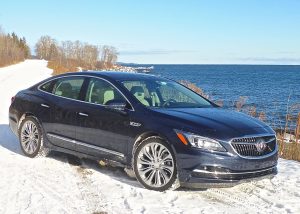
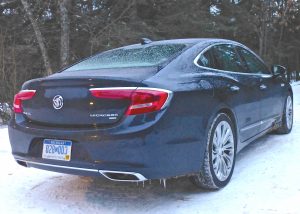
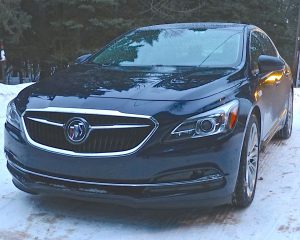
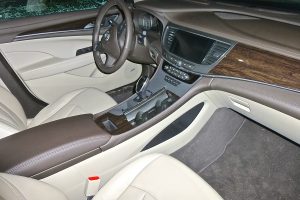

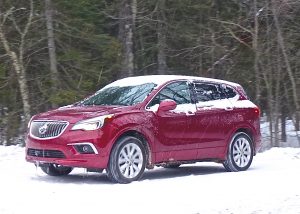
 John Gilbert is a lifetime Minnesotan and career journalist, specializing in cars and sports during and since spending 30 years at the Minneapolis Tribune, now the Star Tribune. More recently, he has continued translating the high-tech world of autos and sharing his passionate insights as a freelance writer/photographer/broadcaster. A member of the prestigious North American Car and Truck of the Year jury since 1993. John can be heard Monday-Friday from 9-11am on 610 KDAL(www.kdal610.com) on the "John Gilbert Show," and writes a column in the Duluth Reader.
John Gilbert is a lifetime Minnesotan and career journalist, specializing in cars and sports during and since spending 30 years at the Minneapolis Tribune, now the Star Tribune. More recently, he has continued translating the high-tech world of autos and sharing his passionate insights as a freelance writer/photographer/broadcaster. A member of the prestigious North American Car and Truck of the Year jury since 1993. John can be heard Monday-Friday from 9-11am on 610 KDAL(www.kdal610.com) on the "John Gilbert Show," and writes a column in the Duluth Reader.